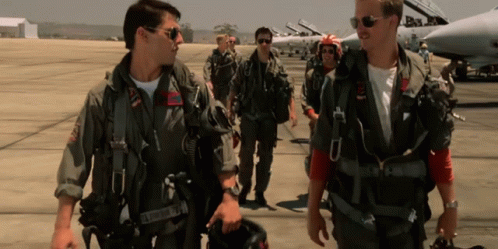How to Succeed in Flight School

Whether you dream of becoming Top Stick at the Navy Fighter Weapons School or an international long-haul pilot for Delta Airlines, everyone starts somewhere. And that “somewhere” for most people is in flight school, being reminded by your instructor that you forgot the base leg radio call for the fifth time that day.
Not to worry. Today I’ve got a few tips that will help you suck just a little less. Let's go!

Develop Your Memory
What’s certainly become a bit of an obsession of mine, improving your memory and ability to retain information is critical to being a good pilot.
Your ability to memorize and retain information will be tested in two main ways in flight school: parameters, emergency procedures and flight profiles in your long-term memory and frequencies, altitudes and headings, and ATC instructions in your short-term memory.
I call it long-term memory because it’s stuff you’ll want to be able to recall regardless of the type of flight that day and could get you in hot water with your instructor if you can’t remember. Think, for example, EP procedures for an engine fire, maximum airspeed for flaps extended, or wingtip spacing from the runway on an emergency landing. The best way to establish this type of info in your data vault is frequent repetition on a daily basis and then weekly review to maintain it. This is often referred to as spaced repetition and is incredibly effective.
You know when you meet someone for the first time and when you hear their name and immediately forget it? Yeah, that’s a problem for flight school.
So for short-term memory items, the key will be being able to hear a set of instructions once and remember it for the duration of the flight. Think, for example, ATC gives you an IFR clearance with six different things you need to remember and repeat back verbatim. This can be improved with practice alone but I found the visualization techniques discussed by Joshua Foer, which I wrote about, in The Memory Palace are extremely effective.
You Are Who You Surround Yourself With
If you really want to do well in flight school, surround yourself with people that are going to motivate you to do your best.
Find out who the best performing student is and study with them as much as possible. Also, find out who the worst student is and make it your mission to help them be as good as you (if this is you then just stick to the first step). You will be amazed at how much you’ll learn from the best, and how much you’ll learn you don’t know when trying to teach someone else.
Finally, while you can’t always choose who your instructors will be, do your best to put yourself in a position to receive the best instruction possible. Instructors want to fly with students that know their stuff and are enjoyable to be around. Conversely, you’d be amazed at how quickly word travels around the squadron when a student “unsats” multiple briefs for general knowledge.
Chair Fly
Both the single greatest thing you can do to become a better pilot and the punchline of any instructor’s joke if you ask them what you can do to get better.
Regardless, chair flying can dramatically improve your headwork and situational awareness when in the plane. And it’s really simple, requiring almost no resources.
Simply sit in a chair, ideally in front of a cockpit poster, and go through an entire flight from startup to shutdown. Practice moving your hands to the correct switches, dials, and levers. Particular emphasis should be put on your emergency procedures so that your muscle memory can take over in the event of an actual emergency. Even a couple of seconds early on in an emergency could result in hundreds of extra feet of glide altitude. I wonder if Sully chair flew?
Game Plan
Know exactly what training you want to accomplish for the day. In the Navy, you had to get a certain amount of maneuvers done by the end of each block but as for any given flight, it was really up to you want you wanted to practice most.
Similarly in the civilian world: if you feel confident with your stall recoveries, don’t let a lazy instructor convince you to do the same cookie-cutter flight plan. Try new airfields or more advanced maneuvers so that you don’t waste money where you’re already proficient.
Once you have a game plan for the day, maybe the biggest piece of advice I can give is to write out every single event of the flight with the actions you should take and radio calls to make at those points. For example:
Raise gear and retract flaps at 100 knots
Once retracted: “Gear up, flaps up at 100 knots”
Climb to 1000’ and then level out, build up speed to 120 knots
Make departure call: “Cook County Traffic, Bonanza 123….”
Writing out a detailed flight plan for every flight, similar to chair flying, will help you mentally review every step of your flight plan and ensure no surprises in the cockpit.
Flight Simulators
With how far technology has come nowadays, if you’re serious about flight school it’s actually quite easy and cheap to get access to a flight simulator. This can be as simple as X-Plane 11 for iPhone or as in-depth as Microsoft Flight Simulator 2022 for PC with a full stick and rudder setup.
You can get fantastic training with both because the main goal is simply increasing your exposure to the aviation world and practicing techniques between your flights.
Plus it’s always fun to go up in an F4 Phantom and make fighter pilot noises over Chicago.
